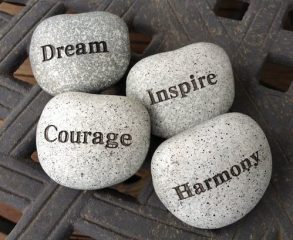Whether it be in business or life, we always run into situations that call for a decision. Whether we know it or not, we’re always making this decision based upon our knowledge, our experience, or our awareness around us. That decision is whether to be in the real world or be in a made-up world.
This may sound a little funny but what this is referring to is how we may appear, communicate or interact depending upon the situation. In other words, are we going to be completely truthful in the situation, are we going to be our natural self when we are involved in some way with another individual. Everyday we’re making those decisions. Every conversation means we are taking stock of the situation and responding in some way. Let me give you an example – let’s say you are preparing to ask someone to go to dinner and you perceive the person as an extrovert and you are not quite an extrovert but not a true introvert. In your judgment of the situation means you need to be very gregarious, outgoing and enthusiastic about the asking. Therefore, you are going a bit outside your normal personality. Now this is a very simple situation, but it does reflect how we tweak our realities based upon the perceptions we have of the situation or issue.
In other words, we want to try to establish our own reality in that situation and sometimes it means we must alter our own initial reality to get where we want to go or to receive what we want to receive. If you think about your own situations, how do you think different issues correlate to this? It is something we all run into from time to time, but it’s daily, if not hourly, that this situation happens because when you think about it, each time someone enters your space, they are changing your reality to a certain degree and you are changing your reality to a certain degree to adjust to whatever the issue may be.
It is said you should be true to your nature, but we can’t always do that because staying true to your nature means no one impacts you, no one changes the way you see things, so the way you see things is the way it is at that time. Is every reaction you have exactly who you are? Not necessarily. People change us just as much as we change them. What we need to be aware of is how much someone is changing our reality or how much we’re changing our reality for them.
Another example is if you look at business relationships such as boss to employee. An employee is always trying to be the perfect subordinate even when that is not necessarily their nature or their reality. I’m not saying they should be a bad employee, I’m just saying they are not being themselves. When they are not being themselves and just saying what the boss wants to hear they are creating a perception that may not be reality. We have to be aware of ourselves and who we are, and, unless we are aware of the nature of the person we are talking to, we can’t help but change some realities. We have to make the choice of who we are going to be and the frustration for many comes when they look back and realize, “that was not who I am”.
If we want to be as consistent as possible, we must know who we are and what we want and need to have a philosophy of life that initiates a nature that is easy to project. What that means is, if you have a philosophy of life that says, “seek happiness in everything you do,” then your projection reflects that attitude.
Typically, what you give is what you will receive. If you are consistent in what you project, then what you receive is going to be will be in like manner. If you are always smiling at people, I would be willing to bet that you are constantly receiving smiles in return.
The bottom line is, know who you are, know what you want, know how to give, know your philosophy of life and understand as much as you can the nature of other people. Joy is found in drawing people into the reality of happiness and contentment.

Please subscribe to learn more in the column to the right! I look forward to your comments on our blogs.







